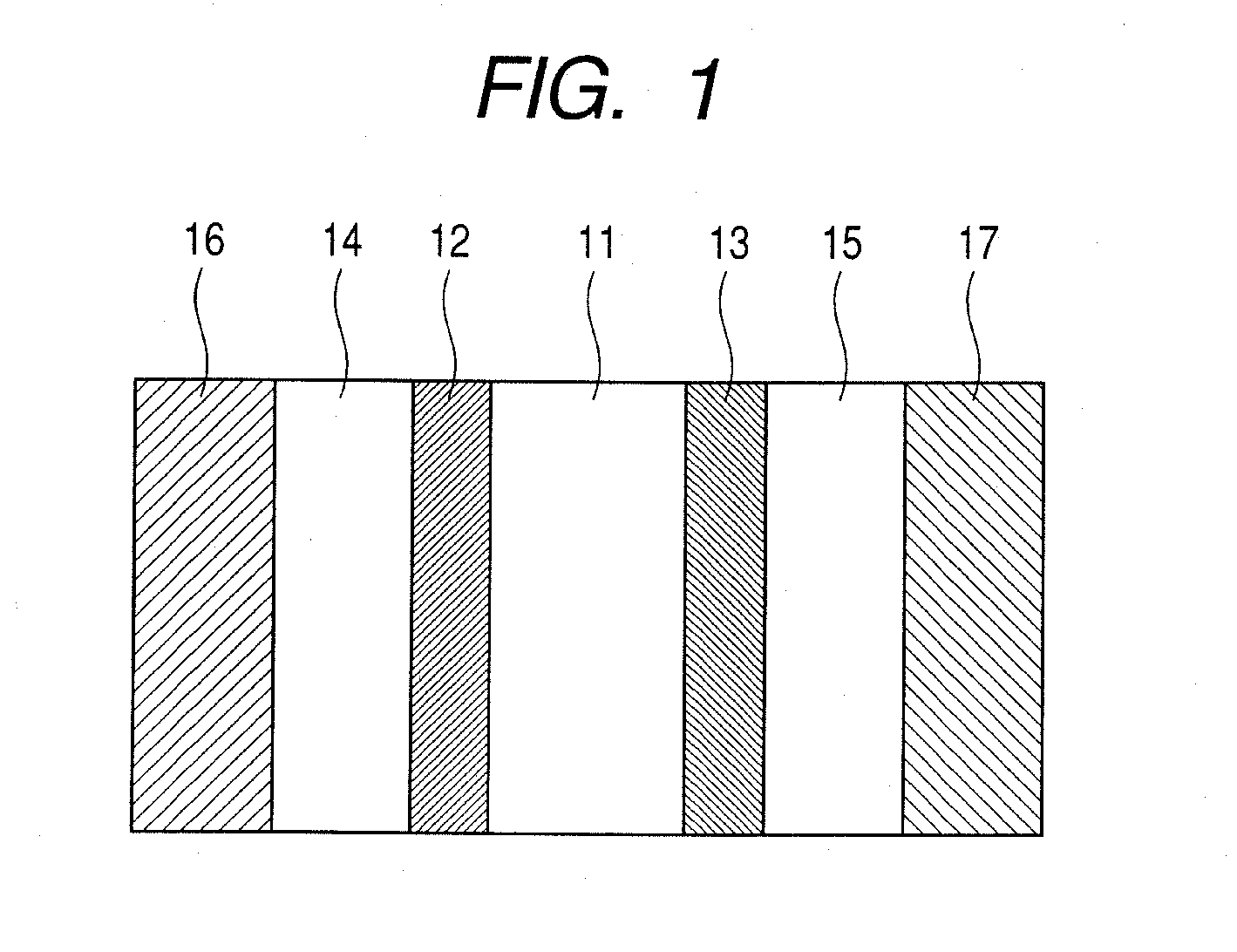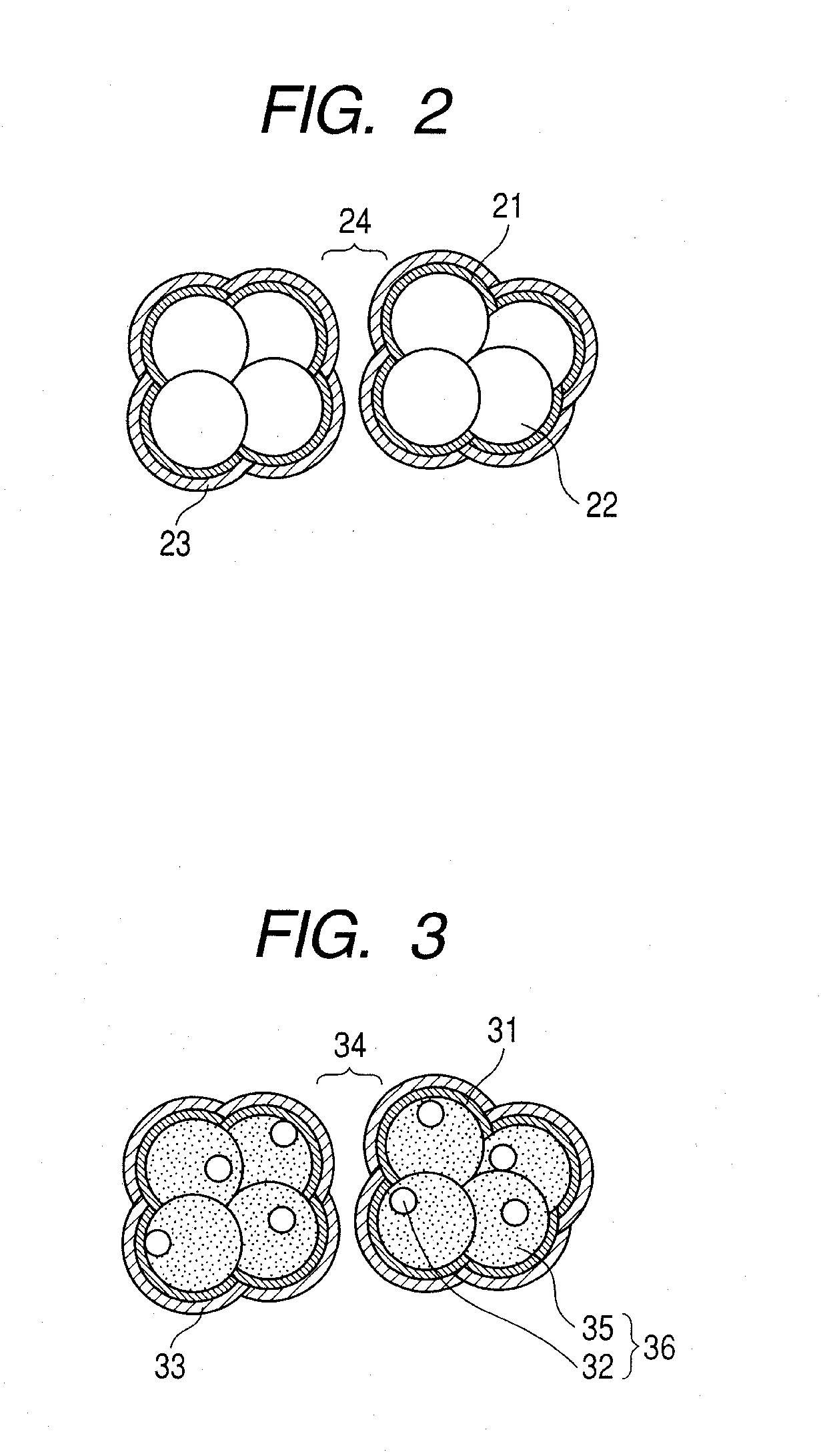Water repellent catalyst layer for polymer electrolyte fuel cell and manufacturing method for the same
a technology of electrolyte fuel cell and catalyst layer, which is applied in the direction of primary cells, electrochemical generators, cell components, etc., can solve the problems of flooding phenomenon, power generation finally stops, and the voltage is gradually reduced, so as to improve the evacuation performance of produced water and the catalyst utilization ratio
- Summary
- Abstract
- Description
- Claims
- Application Information
AI Technical Summary
Benefits of technology
Problems solved by technology
Method used
Image
Examples
example 1
[0062]In this example, a description is made of an example in which, by a reactive sputtering method, a porous platinum oxide was formed and was reduced to form a porous platinum catalyst. After that, a coating film was formed by using Novec EGC-1720 (manufactured by 3M) and was then irradiated with ultraviolet light, thereby manufacturing a water repellent catalyst layer.
[0063]On a PTFE sheet (NITOFLON manufactured by Nitto Denko Corporation), a porous platinum oxide layer was formed by the reactive sputtering method to have a thickness of 2 μm. The reactive sputtering was performed under conditions of a total pressure of 5 Pa, an oxygen flow rate of (QO2 / (QAr+QO2)) 70%, a substrate temperature of 25° C., and an RF input power of 5.4 W / cm2. On the obtained porous platinum oxide layer, 50 μl of a 5 wt. % Nafion (registered trademark) solution (manufactured by Wako Pure Chemical Industries, Ltd.) was dropped and a solvent was evaporated in a vacuum, thereby forming an electrolyte cha...
example 2
[0071]In this example, a description is made of an example in which, by the reactive sputtering method, the electrolyte layer was formed on the porous platinum oxide, and after that, the coating film was formed by using a 10-fold dilution of Novec EGC-1720 (manufactured by 3M) and was irradiated with ultraviolet light, thereby manufacturing the water repellent catalyst layer as an AFM analytical sample.
[0072]In the same manner as in Example 1, the porous platinum oxide layer was formed on the PTFE sheet (NITOFLON manufactured by Nitto Denko Corporation) by the reactive sputtering method to have a thickness of 2 μm. On the obtained porous platinum oxide layer, 50 μl of the 5 wt % Nafion (registered trademark) solution (manufactured by Wako Pure Chemical Industries, Ltd.) was dropped and dried, thereby forming the electrolyte layer on the surface of the porous platinum oxide layer.
[0073]The obtained sample was coated by the dip-coating method with the Novec EGC-1720 diluted 10-fold wi...
example 3
[0074]In this example, a water repellent catalyst layer was manufactured, as an AFM analytical sample, in the same manner as in Example 2, except that the Novec EGC-1720 according to Example 2 was used without being diluted.
PUM
| Property | Measurement | Unit |
|---|---|---|
| Temperature | aaaaa | aaaaa |
| Thickness | aaaaa | aaaaa |
| Molecular weight | aaaaa | aaaaa |
Abstract
Description
Claims
Application Information
 Login to View More
Login to View More - R&D
- Intellectual Property
- Life Sciences
- Materials
- Tech Scout
- Unparalleled Data Quality
- Higher Quality Content
- 60% Fewer Hallucinations
Browse by: Latest US Patents, China's latest patents, Technical Efficacy Thesaurus, Application Domain, Technology Topic, Popular Technical Reports.
© 2025 PatSnap. All rights reserved.Legal|Privacy policy|Modern Slavery Act Transparency Statement|Sitemap|About US| Contact US: help@patsnap.com



